How to Make Canadian Bacon/Back Bacon: Much Better Homemade
This may not come as a surprise, but Canadian bacon is not called Canadian bacon in Canada. Oh, and it is not a round, tube-shaped ham.
Far from the floppy, soggy ham you’ve seen strewn about on pizza, or unjustly represented by the weird, perfectly circular meat slices on eggs Benedict, real Canadian bacon—and even another kind of bacon from Canada—will change your mind about this delicious, easy to make staple.
Here, we’ll talk about Canadian bacon, what it is, and how to make it at home, and the temperatures you need to pay attention to for success. If you don’t think you like Canadian bacon, it’s probably because you haven’t tasted the real thing. So grab your tuque (Canadian for hat), put on some Neil Young, and get ready to change your mind about Canadian bacon!
What is Canadian bacon?
To answer simply, Canadian bacon is bacon made from a cured pork loin. But a more exact answer is tricky, and depends on what you mean by Canadian bacon. First, there is the cured, smoked loin of pork known to the Canadians as back bacon. But there is also another bacon that is exclusively Canadian: peameal bacon.
Let’s take a closer look at both kinds.
Peameal bacon
First, let’s consider the native bacon of Eastern Canada. Called “peameal bacon” in its home and native land, this bacon is a cured pork loin that is rolled in cornmeal, sliced raw, and usually pan-fried. It gets its name from the 19th-century Torontonian practice of rolling cured pork loins in ground yellow peas, which was meant to draw out water and help prevent spoilage during shipping. After the wars, they switched from peameal to cornmeal, but never changed the name.
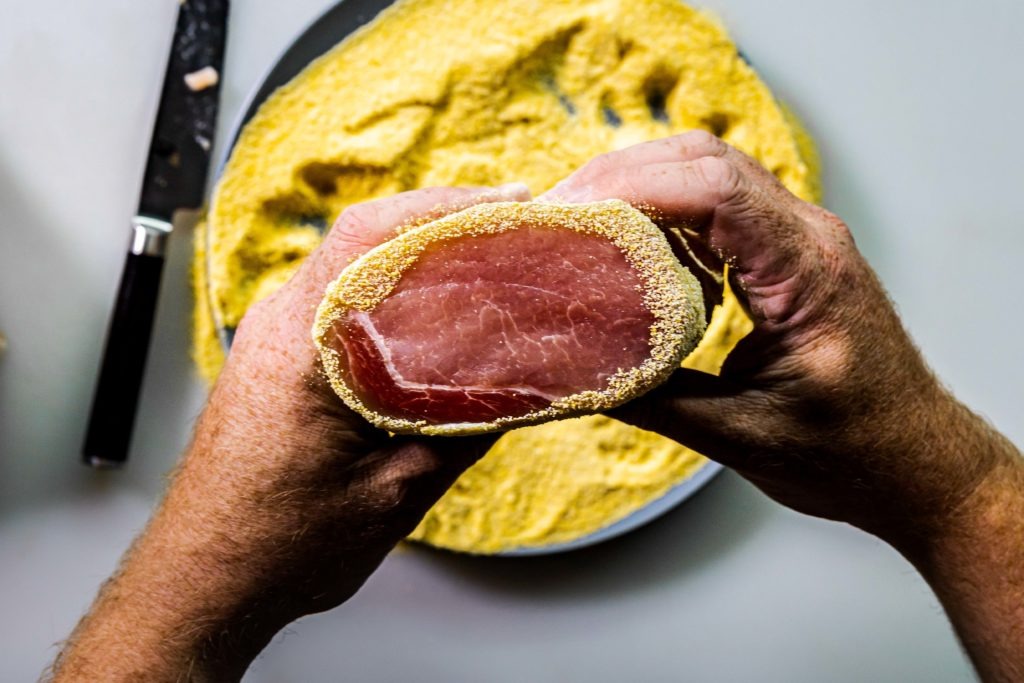
Peameal bacon has a subtle flavor and—because of its wet cure—is juicy and tender. The cornmeal crust gives the slices a pleasant toastiness and the faintest hint of a crunch. In Toronto and the surrounding areas,
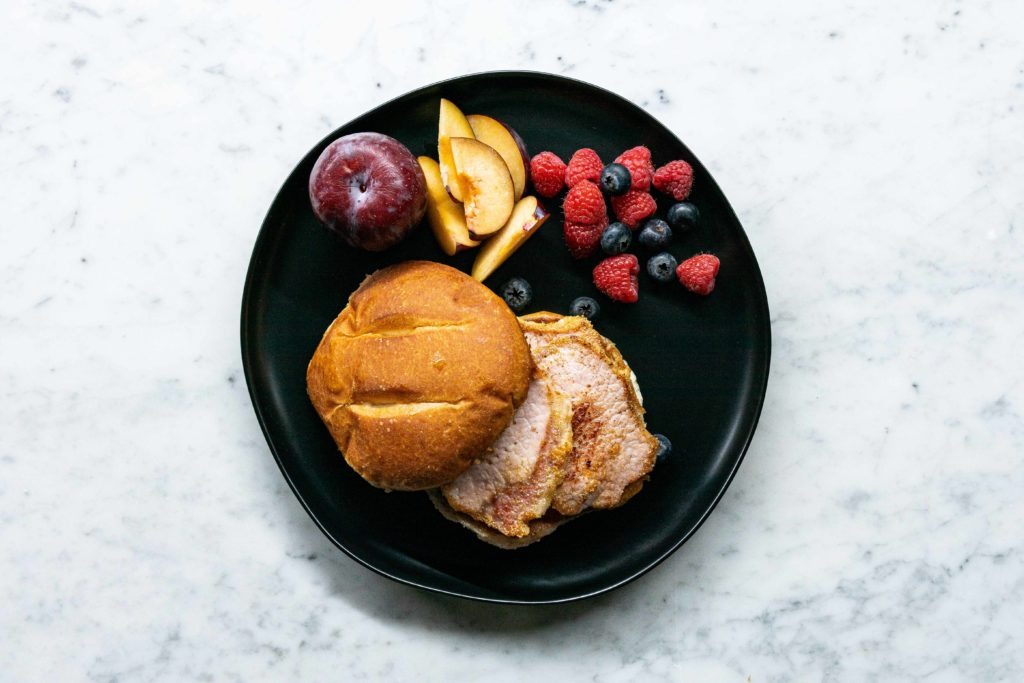
Any trip to Ontario should include a stop at a shop that sells these simple, delicious sandiwches.
A note on brining safety
When curing peameal bacon in brine, it is important to keep the temperature of the curing brine below 40°F (4°C) for the duration of the cure. Though the cure does include curing salt, it will not prevent all pathogenic bacteria from forming if it is allowed to remain in the temperature danger zone. The recipe calls for making a strong brine and mixing it with col water to cool it and dilute it to proper strength. Use a Thermapen® to make sure the brine is below 40°F (4°C) before you start to brine your pork loin, and keep the brining bucket in the refrigerator throughout the process.
“Canadian bacon”/ back bacon
What the Americans call “Canadian bacon” is actually called “back bacon” by the Canadians. And, like peameal bacon, it is made from a cured pork loin. It gets its Canadian name from the loin’s location on the back of the
Back bacon is cured in the exact same way that peameal bacon is, but it is then smoked (without cornmeal) until cooked through. The low-heat smoking—225°F (107°C)—combined with the 140°F (60°C) pull temp leaves the loin juicy, delicious, and with a decided smoky flavor and a beautiful auburn color. (This is the version off of which the imposter “Canadian bacon” is based. A far cry from the real thing!)
Because back bacon is smoked until fully cooked, it can be eaten without further cooking—though it is delicious pan-fried—and can be used on sandwiches, pizzas, as a breakfast side, or anywhere ham would go. If you have a deli slicer, smoking then slicing a large loin’s worth of home-cured Canadian bacon and freezing it in small packages for gradual use would be a fantastic idea.
Canadian bacon and peameal bacon share the same brining process, so back bacon is also juicy and tender, even when cooked. But remember that it is important to follow the same temperature safety rules for brining as outlined for peameal bacon. Keep it cold during the brine!
Which bacon is better, Canadian or peameal?
We followed Michael Ruhlman’s lead and brined a large chunk of loin before cutting it in half to make a half-chunk each of back bacon and peameal bacon. It was fun to try both versions, and they both had serious redeeming qualities. The peameal was easier and offered a clean, direct, cured-pork flavor, while the Canadian (back) bacon came away with far more smoke flavor than I expected. If you’re game, I recommend trying it both ways. They’re both so tasty that I’m going to incorporate both versions into my personal kitchen.
Maple-Cured Canadian Bacon and Peameal Bacon Recipe
This recipe is based on the Maple-Cured Canadian Bacon Recipe by SeriousEats.com.
Ingredients
- 1 gallon water, divided (3.78 litres, divided)
- Or, 1 quart water and 6 pounds of crushed ice
- 1 C kosher salt
- 1 C maple syrup (Grade A Dark Color Robust Flavor recommended)
- 1/3 C light brown sugar
- 2 tsp pink salt (Prague Powder #1)
- 4 bay leaves
- 3 medium cloves garlic, smashed
- 1 Tbsp black peppercorns
- 1 piece of pork loin, 4–5 pounds
For peameal bacon, you’ll also need about 1 C cornmeal, for rolling.
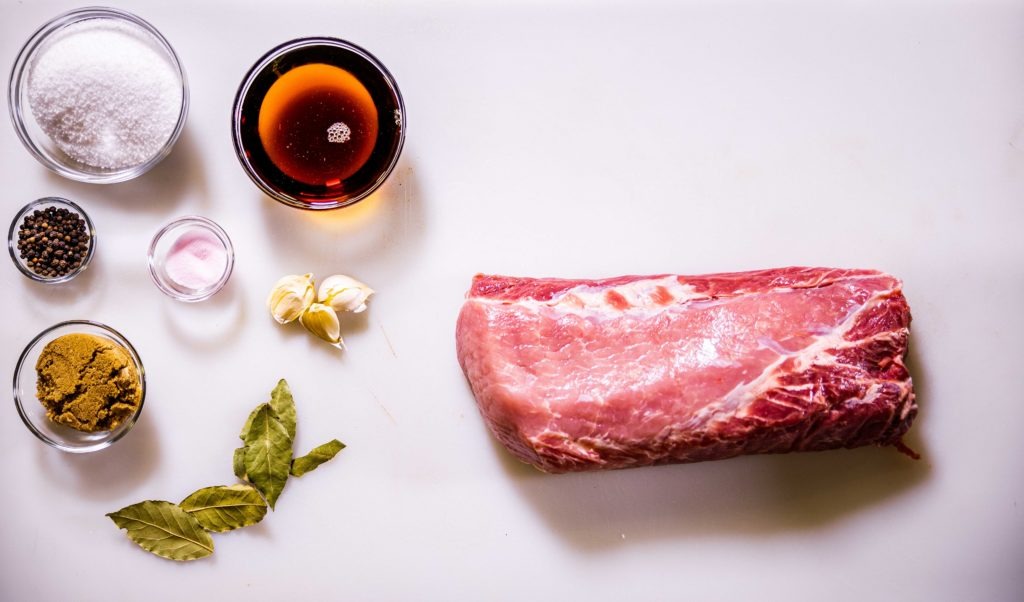
Instructions
Brine the pork loin
- In a saucepan, combine 1 quart of water, the salt, sugar, syrup, the pink salt, bay leaves, garlic cloves, and peppercorns.
- Bring brine to a boil, stirring to dissolve salt and sugar. Boil for 1 minute, then remove from heat.
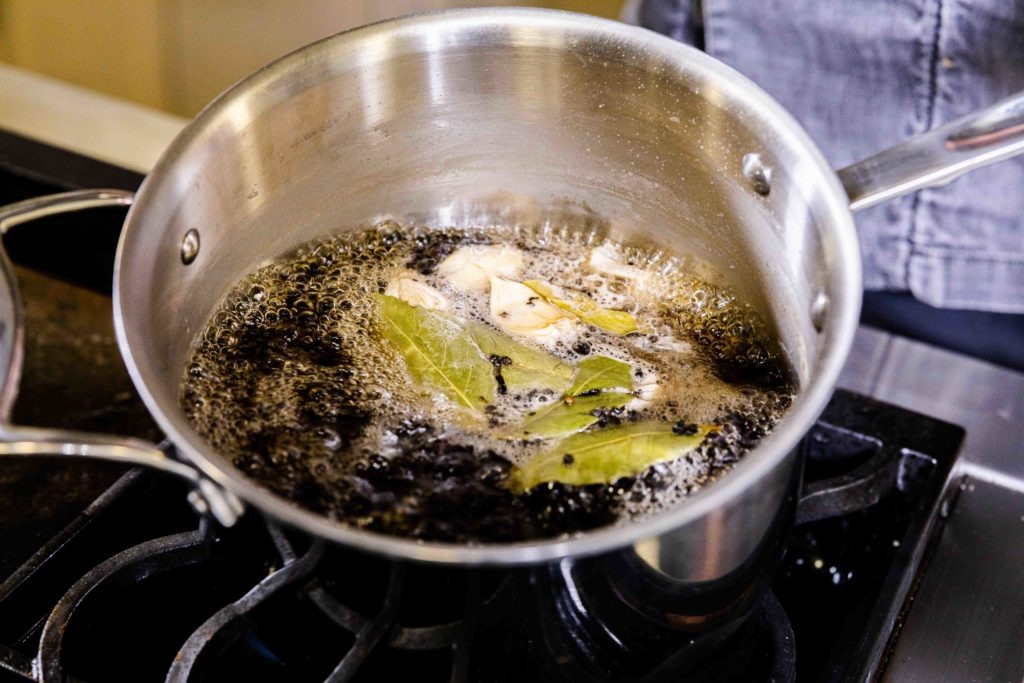
- Pour the brine into a large container and add the cold water or ice create 1 gallon of liquid. Before adding the pork loin, temp the brine to be sure it is at or below 40°F (4°C).
- Submerge the pork loin in the brine, weighing it down with a plate if necessary to keep it submerged.

- Refrigerate the pork in the brine for 3 days.
- After 3 days, pour out the brine and refill the container with fresh cold water. Allow the pork loin to soak in the fresh water for 30 minutes.

- Remove the pork loin from the water and pat it dry with paper towels.
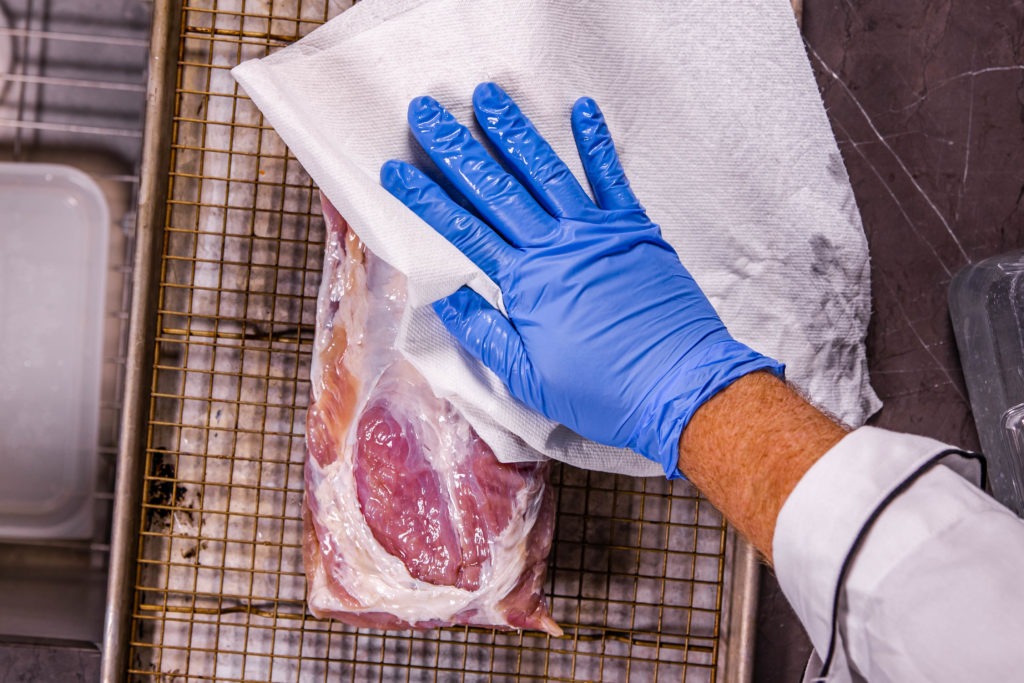
For peameal bacon
- Roll the loin in cornmeal.
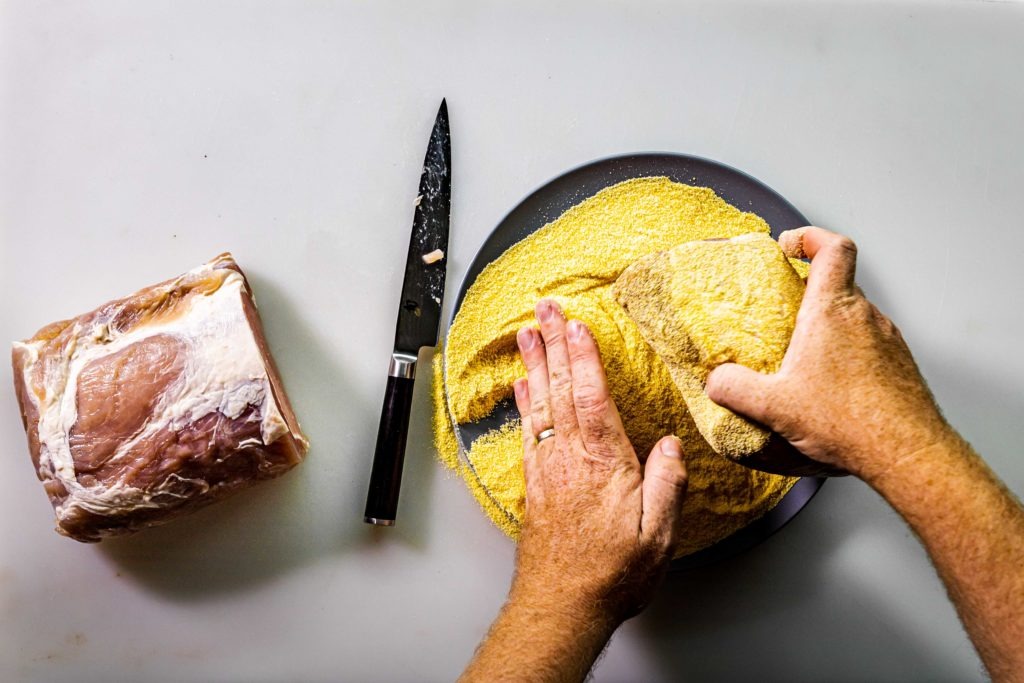
- When ready to serve, slice the loin and fry them in a hot skillet that has been slicked with a little oil or butter.

- Cook, turning from time to time, until slightly browned and the internal temperature is at least 140°F (60°C), as read on a Thermapen®.
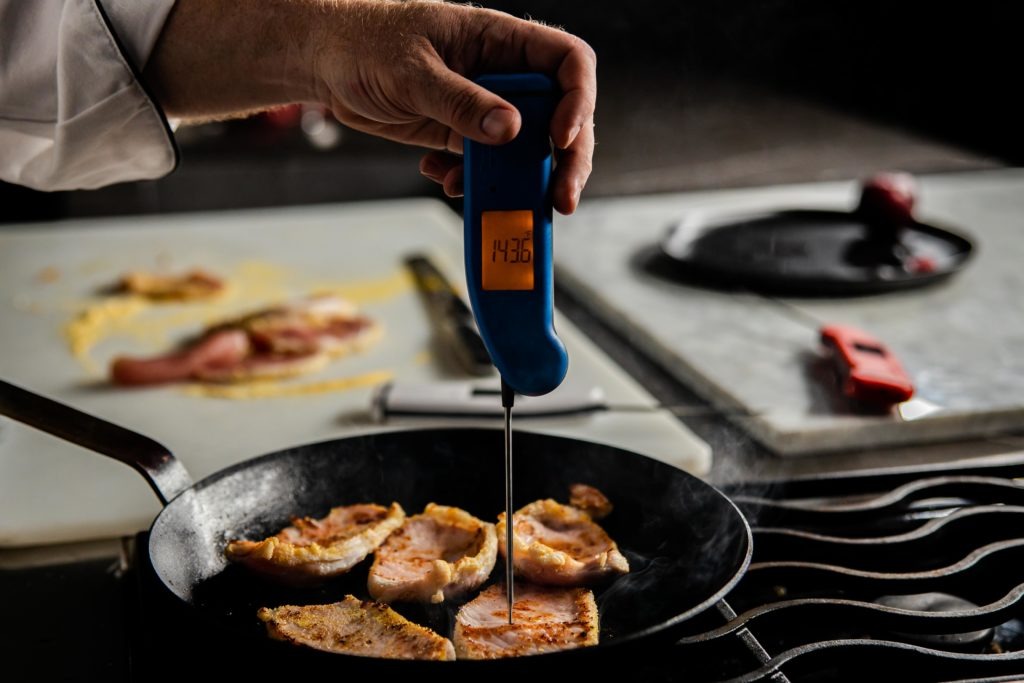
For Canadian bacon (back bacon)
- Preheat your smoker to 225°F (107°C).
- Place the raw, cured loin in the smoker and probe it with a leave-in probe thermometer, like the ChefAlarm®. Set the high-temp alarm for 140°F (60°C) and smoke the loin.
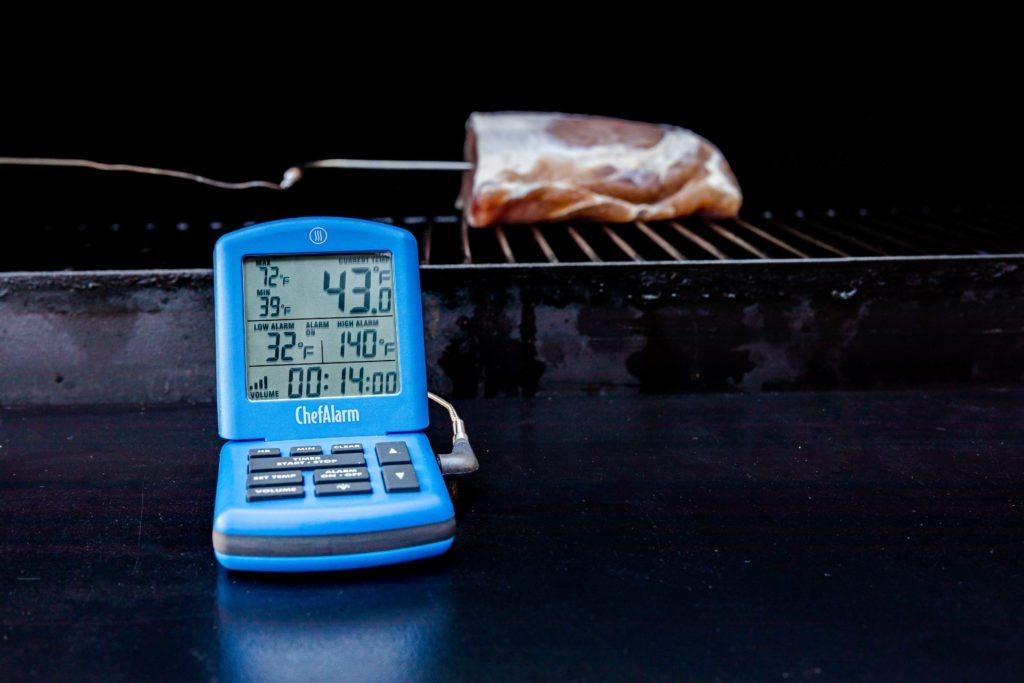
- When the temperature alarm sounds (after roughly an hour and a half), verify that the lowest temperature in the meat is 140°F (60°C) with a Thermapen®. Remove the meat from the smoker and let it cool.
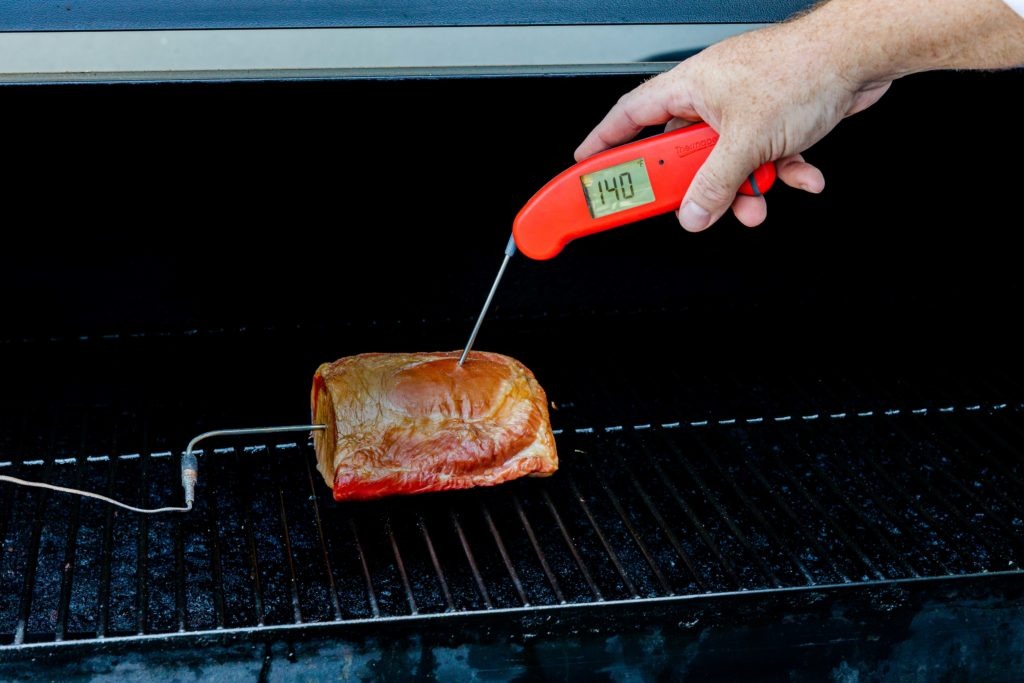
- Slice the back bacon as needed.
- Serve anywhere you would use ham, or just enjoy the slices!
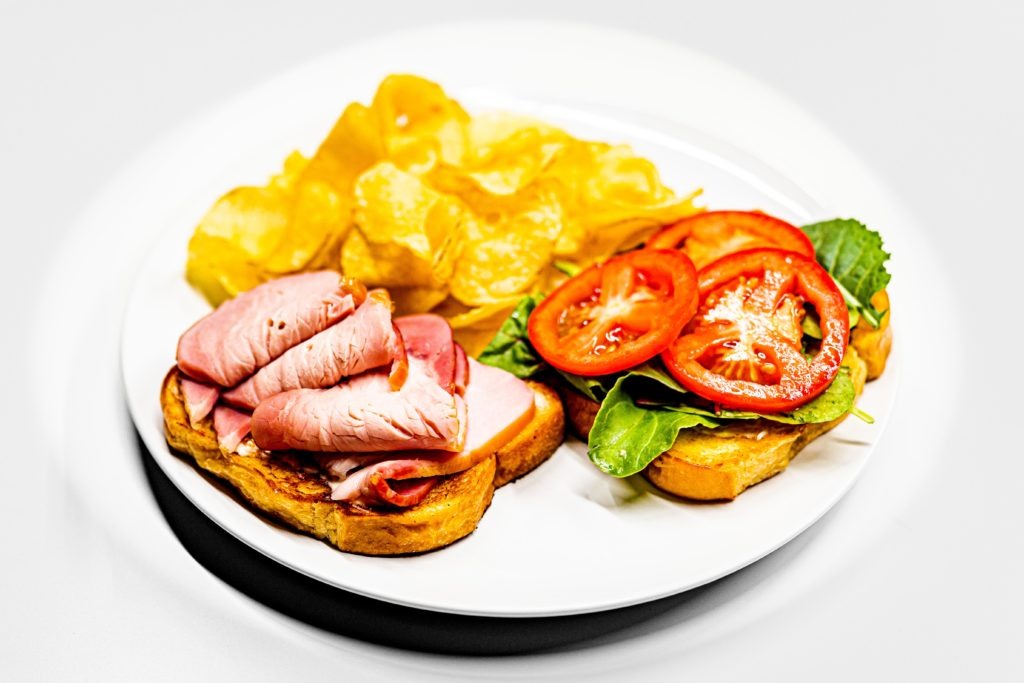
It is a cruel trick to call the tubular meat product bought in stores and slung on ill-conceived pizzas “Canadian bacon”; it is a disservice to the delicious traditions of our Northern neighbors. For a taste of the True North, strong and free, cure your own pork loin and either fry it up raw or smoke it for a delicate, easy-to-carve ham. For safety as well as deliciousness, use the Thermapen® and the ChefAlarm to make sure the pork stays cold while brining and is cooked until it’s safe. Show some love to our fellow continent-ers by trying these delicious dishes at home.
Shop now for products used in this post:


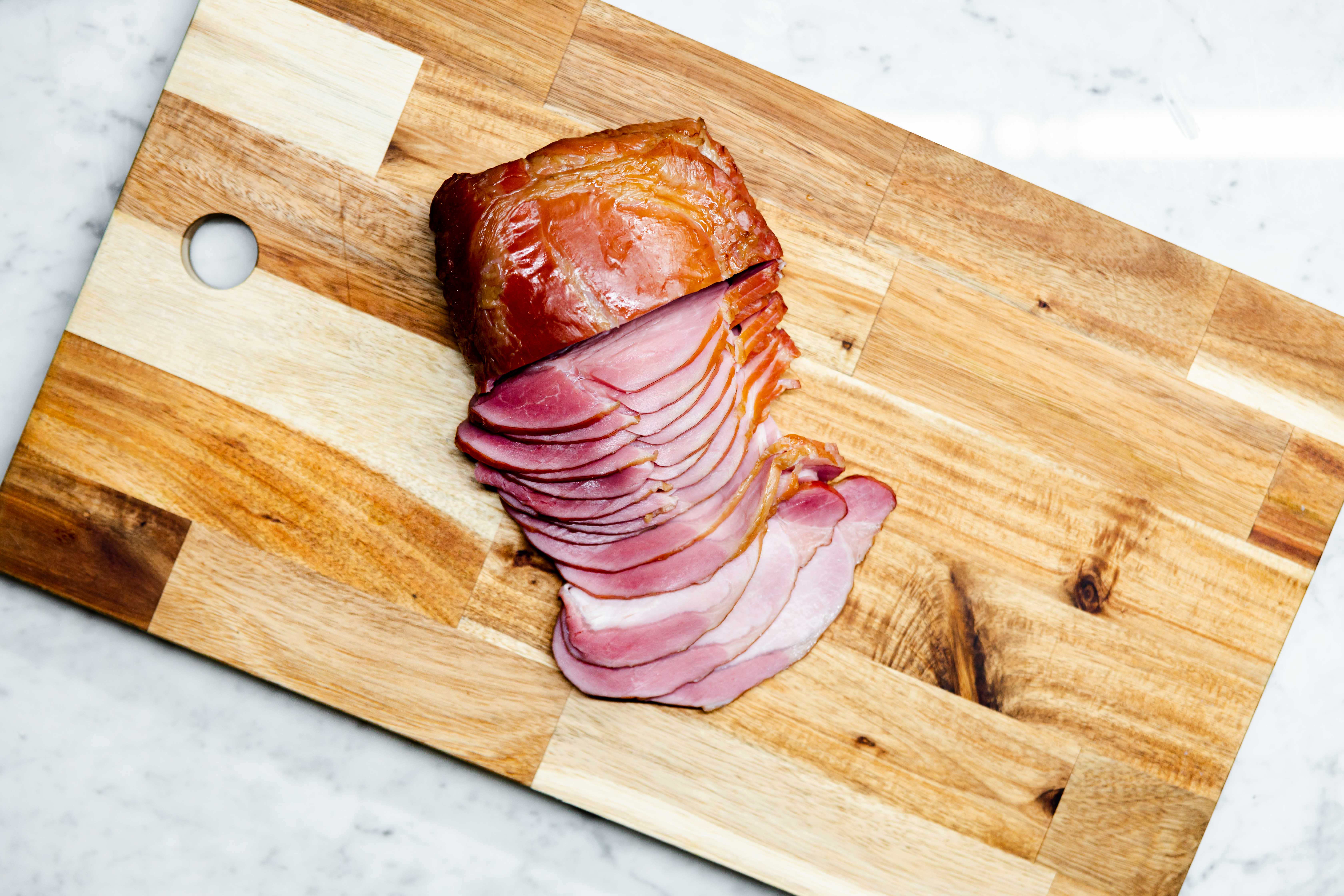
How long can the Canadian Bacon be refrigerated and/or frozen uncooked?
Barry,
Refrigerate for up to two weeks, freeze for months and months if properly wrapped. Freezer burn is the enemy there, and proper wrapping will keep it at bay.
Since when is 140 F considered fully cooked or safe for pork? Every authority I’ve read says 145 minimum.
Charles,
That is the usual, yes. This recipe is counting on some carryover cooking to bring it up to that temp.
If the Canadian bacon is to be frozen, and the brining temperature is 40 f or below, can the pink salt not be used?
Janet,
Yes, you can omit it. But it won’t be pink when you cook it, and there is more to the curing salt than just preservation: it changes the flavor of the meat in a way that regular salt doesn’t. I happen to like the way it changes it, but if you have concerns about the salt for health reasons, by all means, omit it. I would add a little more salt to the brine, though.
An excellent recipe on “CANADIAN BACON”, step by step guide on how do it perfectly. Can I avoid the brown sugar for this dish? What can be the alternative?
Alex,
You can omit sugar, it will just taste predominantly of salt. That style of bacon used to be common, so I’d say give it a try.
Still have the recipe wrong; will get no pink color to meat.
Written as 2tsp, Should be 2 Tablespoon usually written as 2Tsp or 2Tbsp.
Apparently nobody on the site cares or closely review their work!
2 teaspoons is the correct amount. 2 Tablespoons is far too much for this much meat.
Your article has piqued my interest. This is definitely a thinker’s article with great content and interesting viewpoints. I agree in part with a lot of this content. Thank you for sharing this informational material.
Thanks! That means a lot coming from a meat expert in Canada!
The amount of water for this recipe should be in liters, you dont specify if the gallon is US or imperial.
I used the used 3.78 liters or 1 us gallon, hope that’s ok.
US gallon…128 ounces. Yes, you used the correct measurement, 3.78 liters.
I’d like to know How to get the cornmeal to stick to the pork loin. When I had this in Canada, there would always be a quarter inch thick layer of cornmeal. Making it here it just doesn’t stick to the pork. Thank you in advance.
I suspect they bury it in corn meal and let it sit for a long time. The cornmeal will draw out moisture and that moisture will cake the cornmeal to the surface.
Is it Canadian heresy to waste real maple syrup? It’s expensive down here in the States and I cringe at the thought of using a whole cup and then dumping it after the curing step is done.
It is expensive, yes. You could substitute imitation maple syrup—the point is to have some sugar in there.